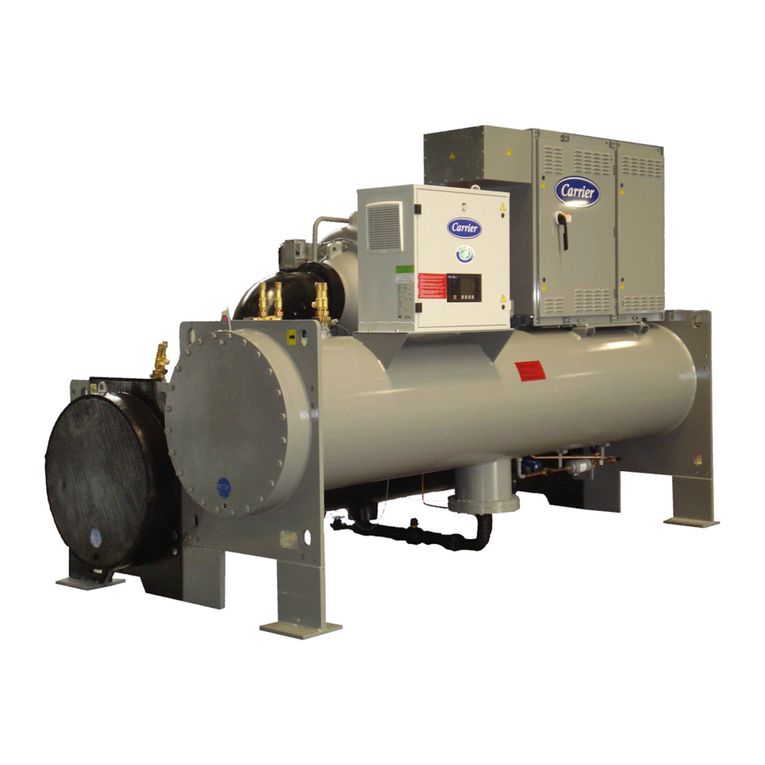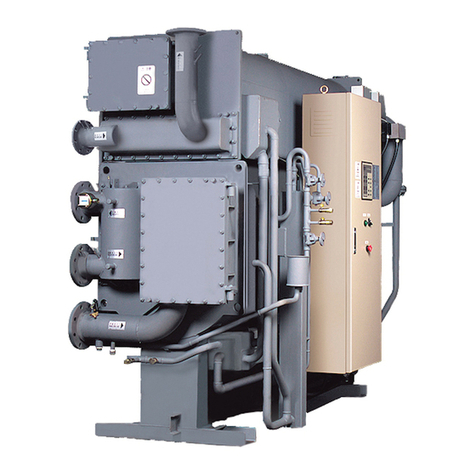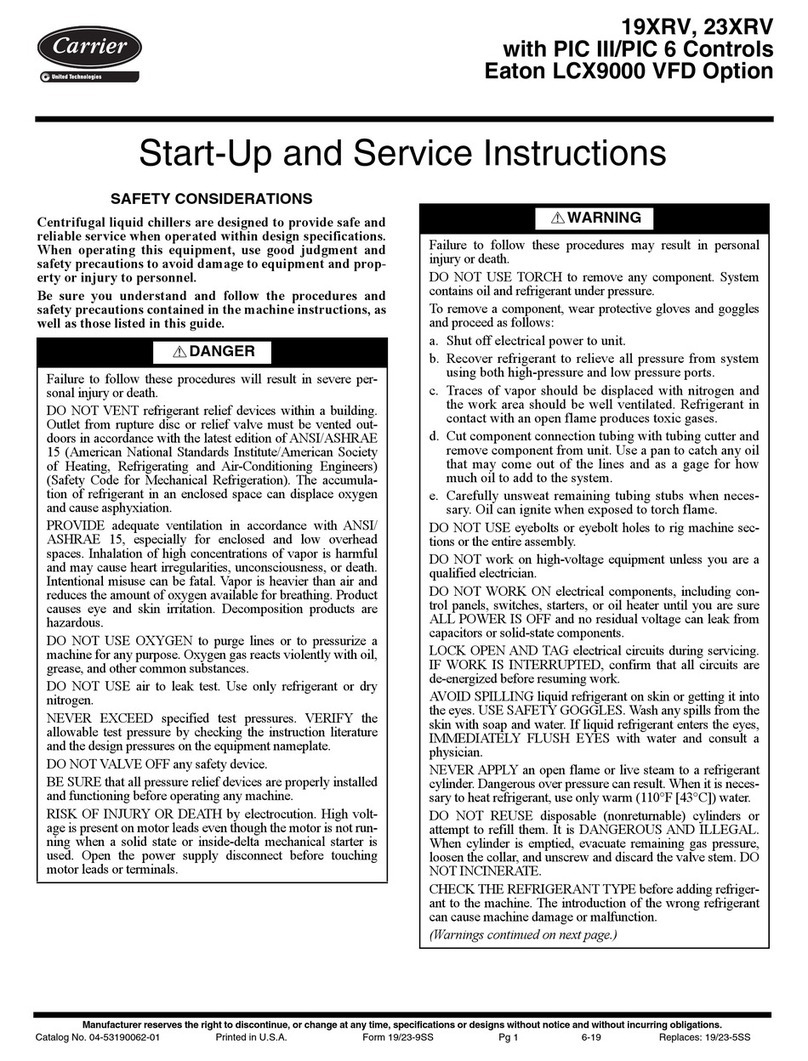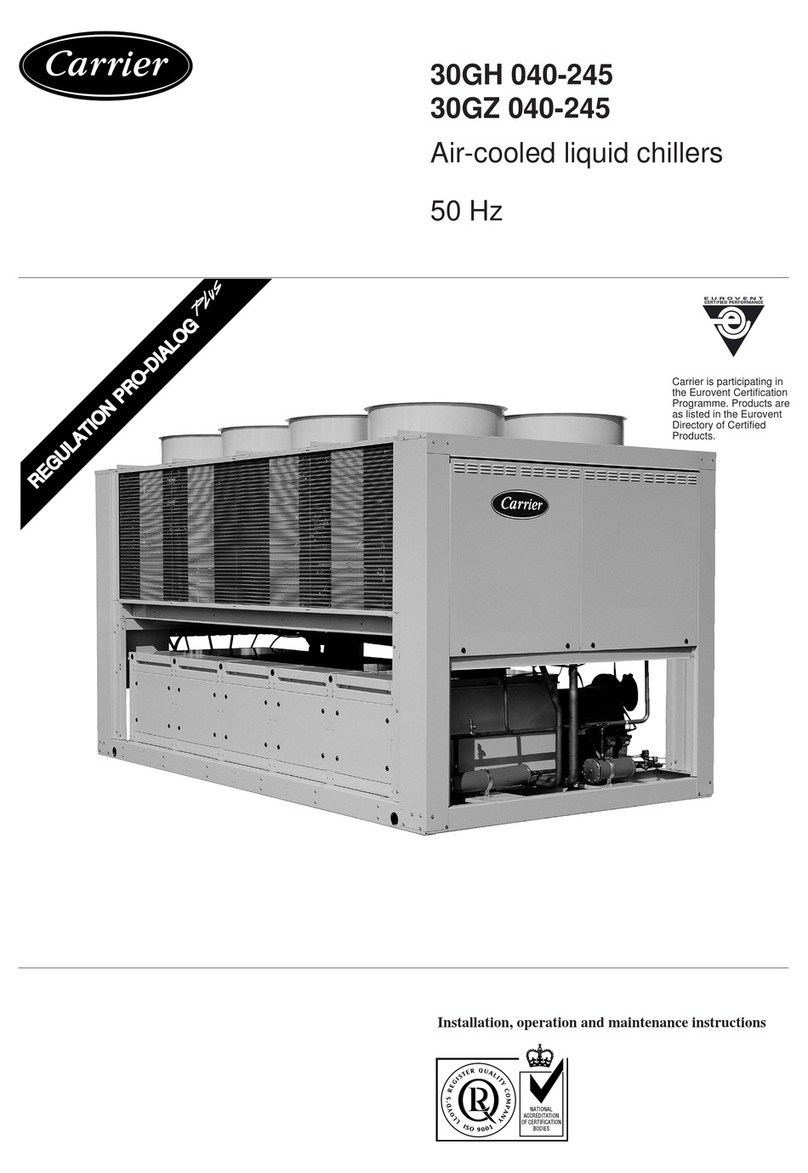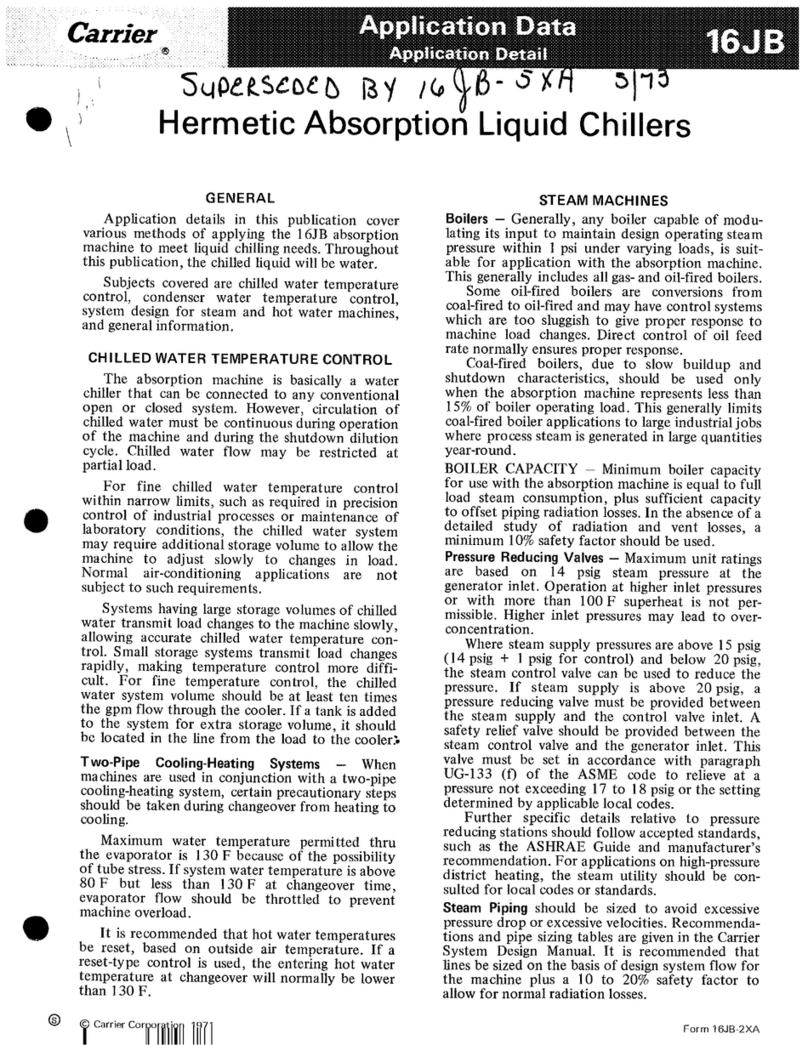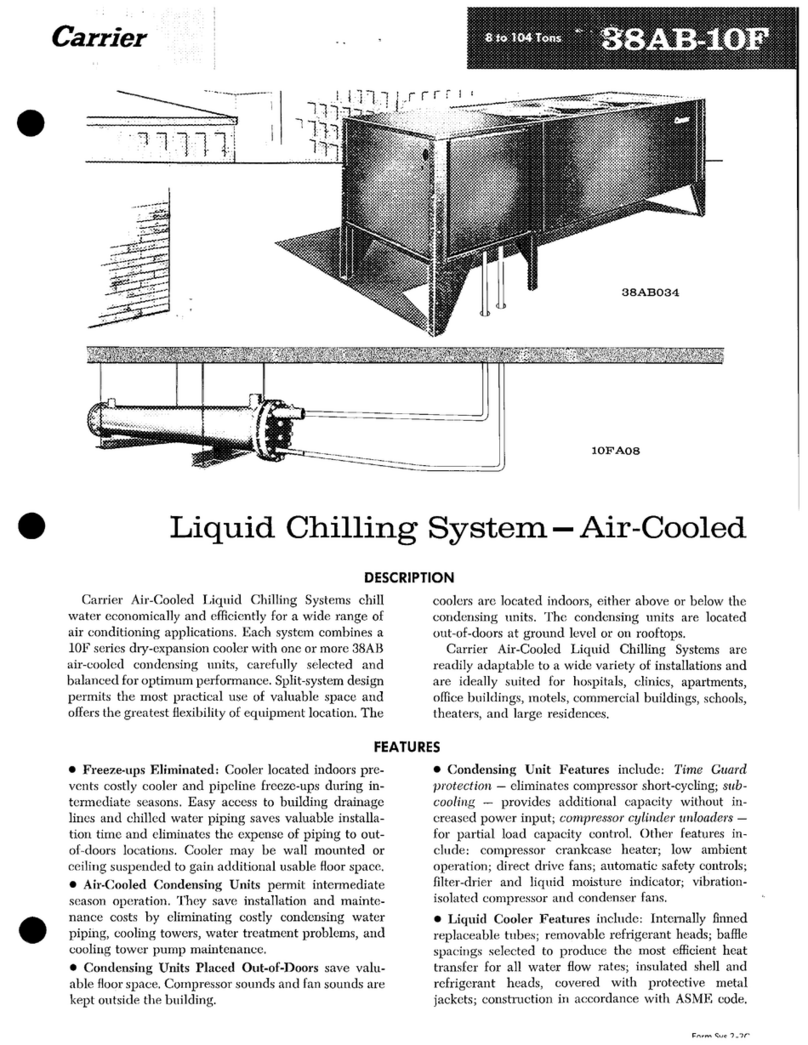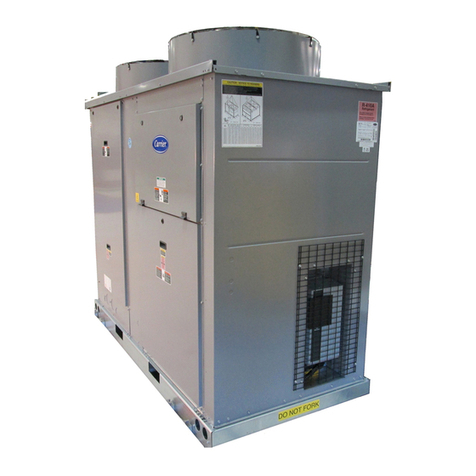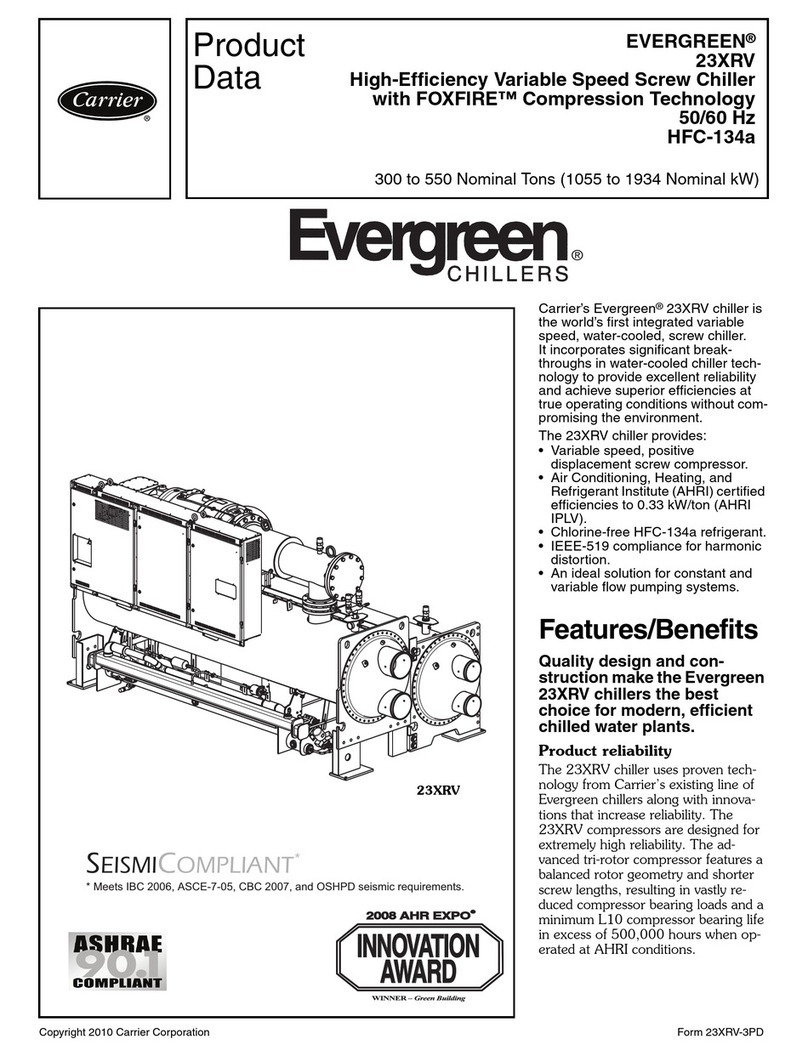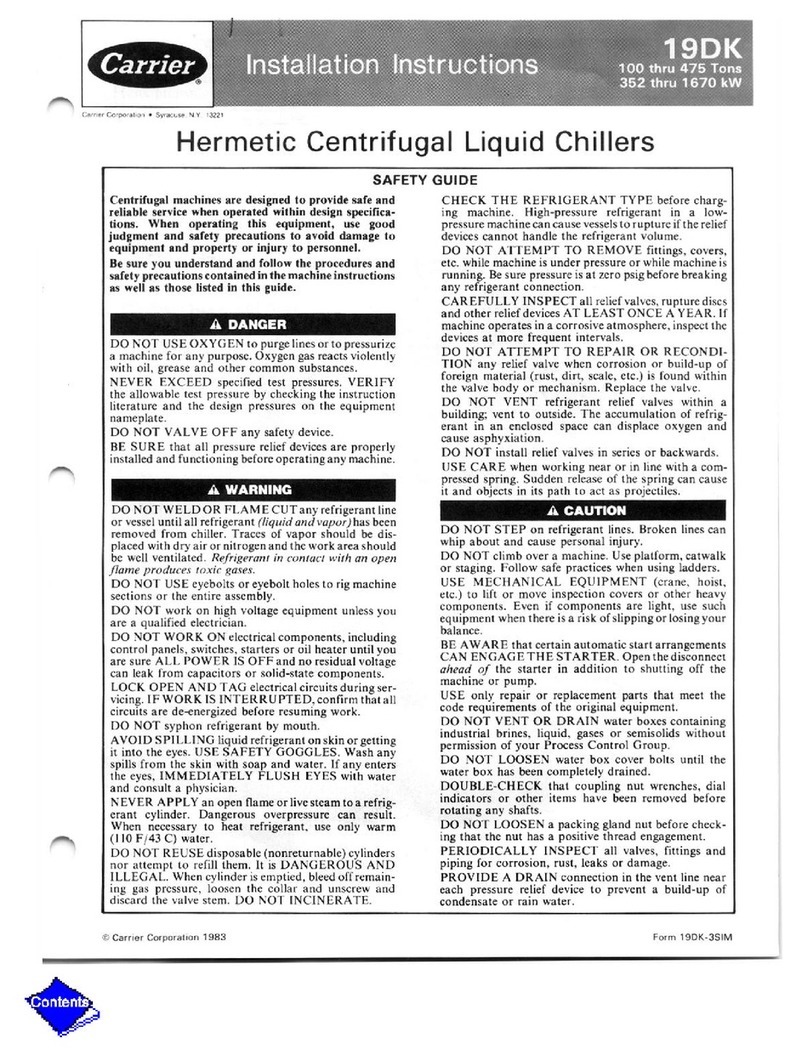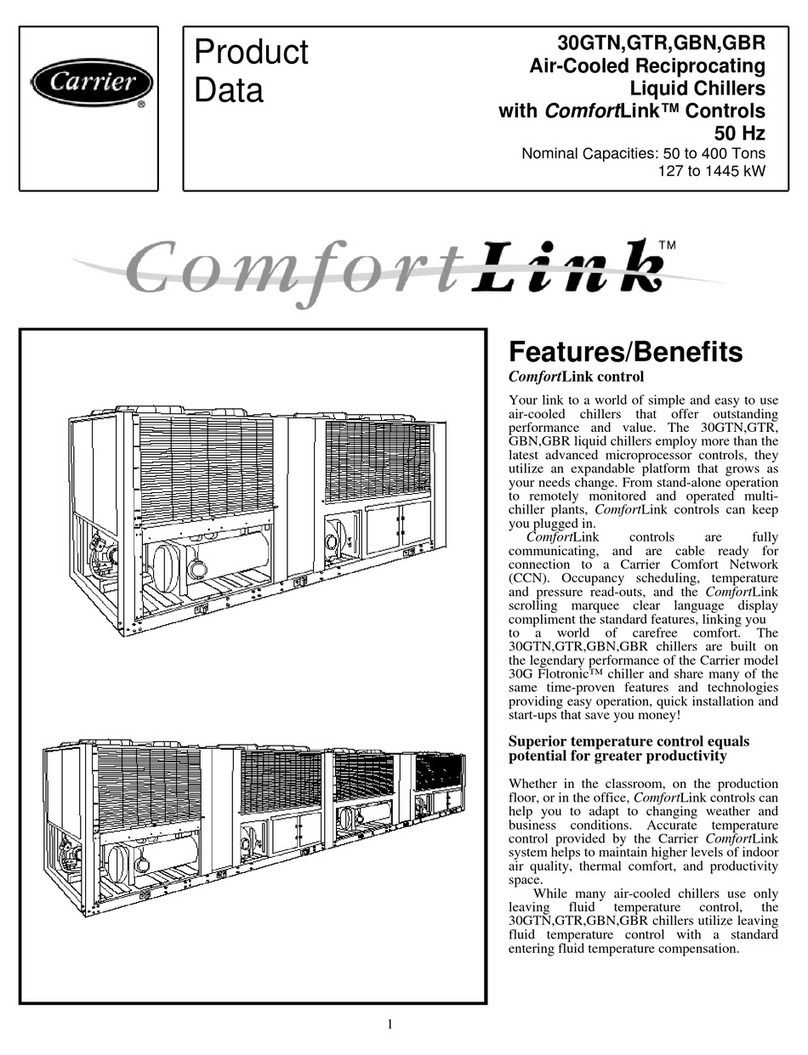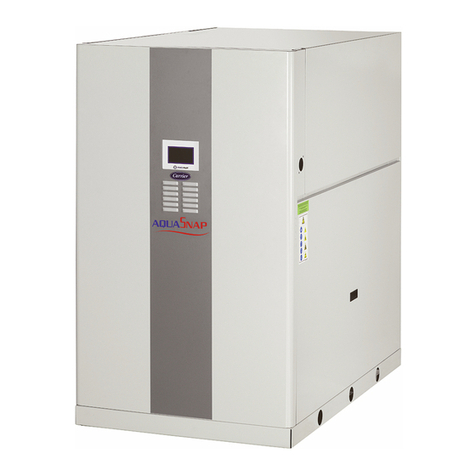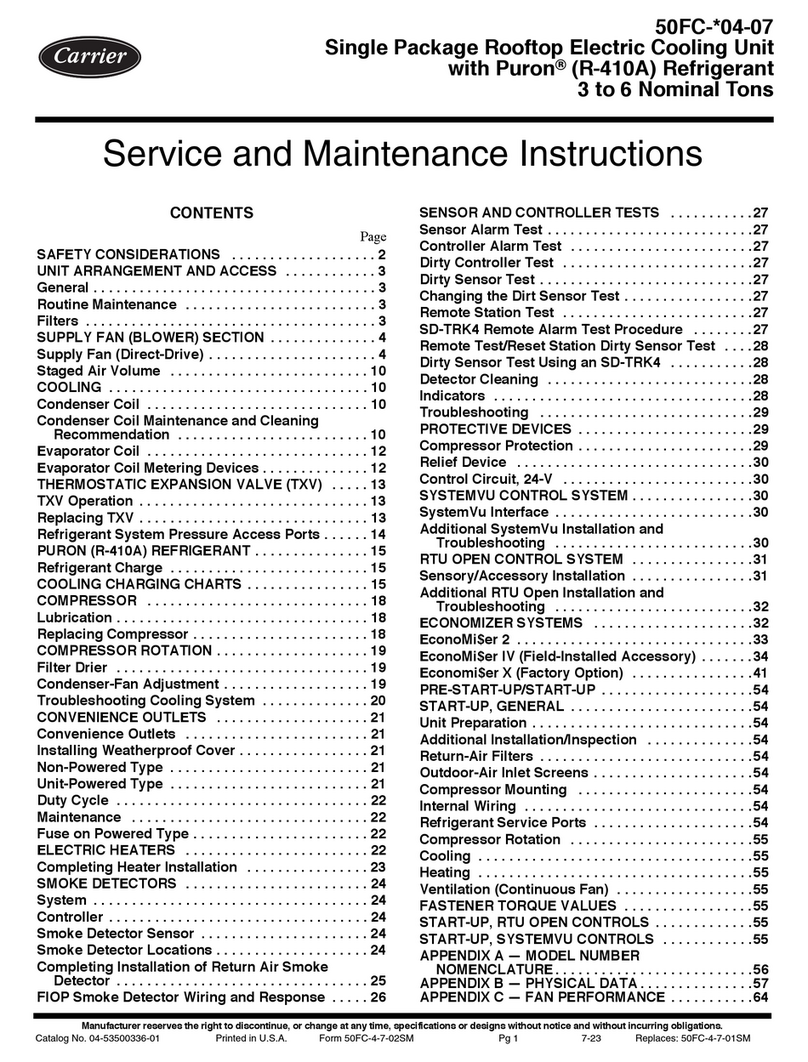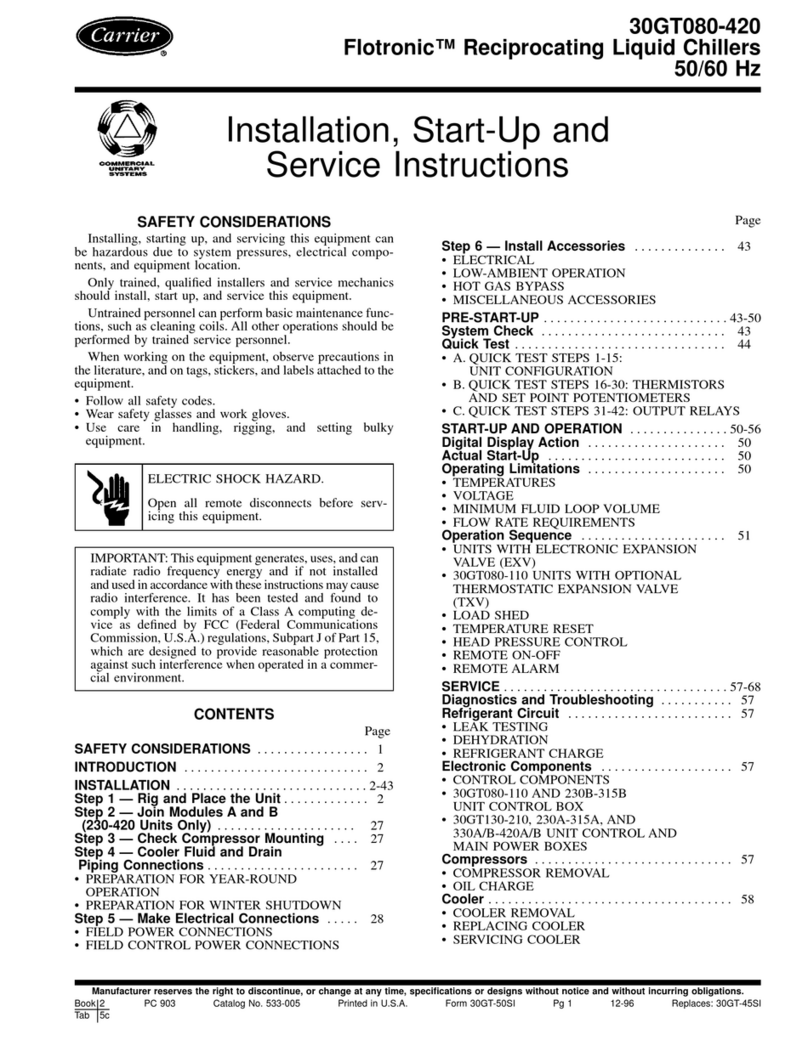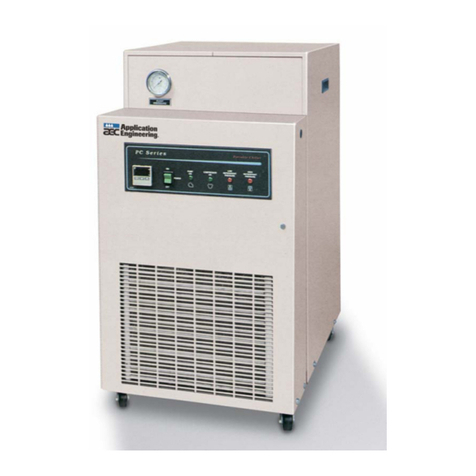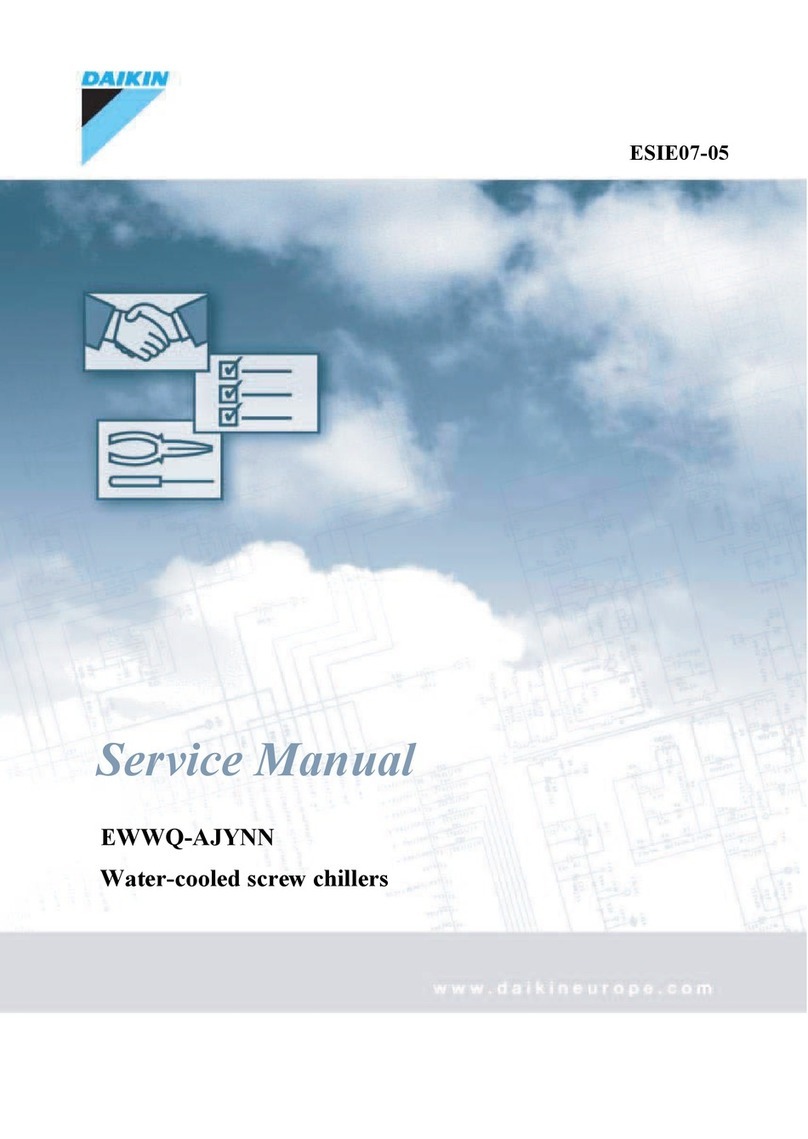
2
WARNING
Failure to follow these procedures may result in personal
injury or death.
DO NOT USE TORCH to remove any component. System
contains refrigerant which can be under pressure.
To remove a component, wear protective gloves and gog-
gles and other necessary safety equipment, and proceed as
follows.
a. Shut off electrical power to unit.
b. Recover refrigerant from system using both high-
pressure and low-pressure ports.
c. Traces of vapor should be displaced with nitrogen
and the work area should be well ventilated.
Refrigerant in contact with an open flame pro-
duces toxic gases.
d. Cut component connection tubing with tubing cut-
ter and remove component from unit.
e. Carefully unsweat remaining tubing stubs when
necessary.
DO NOT USE eyebolts or eyebolt holes to rig machine sec-
tions or the entire assembly.
DO NOT work on high-voltage equipment unless you are a
qualified electrician.
DO NOT WORK ON electrical components, including
control panels, switches, variable frequency drives (VFDs),
or compressors until you are sure ALL POWER IS OFF
and no residual voltage can leak from capacitors.
LOCK OPEN AND TAG electrical circuits during servic-
ing. IF WORK IS INTERRUPTED, confirm that all cir-
cuits are de-energized before resuming work.
AVOID SPILLING liquid refrigerant on skin or getting it
into the eyes. USE SAFETY GOGGLES. Wash any spills
from the skin with soap and water. If liquid refrigerant en-
ters the eyes, IMMEDIATELY FLUSH EYES with water
and consult a physician.
NEVER APPLY an open flame or live steam to a refriger-
ant cylinder. Dangerous over pressure can result. When it is
necessary to heat refrigerant, use only warm (110°F [43°C])
water.
DO NOT REUSE disposable (nonreturnable) cylinders or
attempt to refill them. It is DANGEROUS AND ILLE-
GAL. When cylinder is emptied, evacuate remaining gas
pressure, loosen the collar, and unscrew and discard the
valve stem. DO NOT INCINERATE.
CHECK THE REFRIGERANT TYPE before adding re-
frigerant to the machine. The introduction of the wrong re-
frigerant can cause machine damage or malfunction.
Operation of this equipment with refrigerants other than
those cited herein should comply with ANSI/ASHRAE 15
(latest edition). Contact Carrier for further information on
use of this machine with other refrigerants.
BEFORE ADDING INHIBITOR to the unit, be sure to
check the type. Using the wrong type could result in dam-
age to the unit. Factory unit comes supplied with inhibitor.
DO NOT ATTEMPT TO REMOVE fittings, covers, etc.,
with refrigerant in the machine or while machine is run-
ning. Be sure pressure is at 0 psig (0 kPa) before breaking
any refrigerant connection. Note that at 65°F (18°C) the
machine is at near 0 psig (0 kPa) so ensure to properly
check for the existence of refrigerant in the machine.
CAREFULLY INSPECT all relief valves, rupture discs,
and other safety relief devices AT LEAST ONCE A YEAR.
If machine operates in a corrosive atmosphere, inspect the
devices at more frequent intervals.
WARNING
DO NOT ATTEMPT TO REPAIR OR RECONDITION
any relief device when corrosion or build-up of foreign ma-
terial (rust, dirt, scale, etc.) is found within the valve body
or mechanism. Replace the valve or device.
DO NOT install relief devices in series or backwards.
USE CARE when working near or in line with a com-
pressed spring. Sudden release of the spring can cause it
and objects in its path to act as projectiles.
Prior to installing or servicing this equipment ensure that
personal protective equipment (PPE) is worn as required
per OSHA or other local regulations.
For servicing or installing components where there is a risk
of arc flash the technicians must wear personal protective
equipment as identified in NFPA (National Fire Protection
Association) 70E or other local country-specific require-
ments for arc flash protection.
CAUTION
Failure to follow these procedures may result in personal
injury or damage to equipment.
DO NOT STEP on refrigerant lines. Broken lines can whip
about and release refrigerant, causing personal injury.
DO NOT climb over a machine. Use platform, catwalk, or
staging. Follow safe practices when using ladders.
USE MECHANICAL EQUIPMENT (crane, hoist, etc.) to
lift or move inspection covers or other heavy components.
Even if components are light, use mechanical equipment
when there is a risk of slipping or losing your balance.
BE AWARE that certain automatic start arrangements CAN
ENGAGE THE VFD, TOWER FAN, OR PUMPS. Open
the disconnect ahead of the VFD, tower fan, and pumps.
Shut off the machine or pump before servicing equipment.
USE only repaired or replacement parts that meet the code
requirements of the original equipment.
DO NOT VENT OR DRAIN waterboxes containing indus-
trial brines, liquid, gases, or semisolids without the permis-
sion of your process control group.
DO NOT LOOSEN waterbox cover bolts until the water-
box has been completely drained.
DOUBLE-CHECK that coupling nut wrenches, dial indica-
tors, or other items have been removed before rotating any
shafts.
DO NOT LOOSEN a packing gland nut before checking
that the nut has a positive thread engagement.
PERIODICALLY INSPECT all valves, fittings, and piping
for corrosion, rust, leaks, or damage.
PROVIDE A DRAIN connection in the vent line near each
pressure relief device to prevent a build-up of condensate or
rain water. Ensure to slope piping way from relief device.
DO NOT re-use compressor purge oil or any oil that has
been exposed to the atmosphere. Dispose of oil and refrig-
erant per local codes and regulations.
DO NOT introduce oil to the refrigerant circuit with refrig-
erant recovery containers, vacuum pump, or other means.
DO NOT leave refrigerant system open to air any longer
than the actual time required to service the equipment. Seal
circuits being serviced and charge with dry nitrogen to pre-
vent contamination when timely repairs cannot be
completed.


